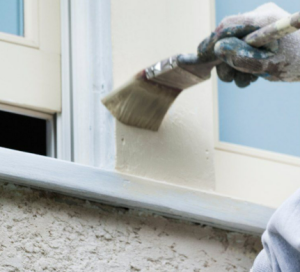What Is the Best Time of Year to Paint a House in Florida?





 Hiring a painting contractor to paint your home is one of the most effective ways to enhance curb appeal, protect your investment, and breathe new life into your living space. But if you live in Florida—especially in areas like Palm Harbor—there’s more to it than just picking a color and hiring a painting contractor. Florida’s unique climate, with its subtropical temperatures, high humidity, and unpredictable rain patterns, makes timing a critical factor for any successful painting project.
Hiring a painting contractor to paint your home is one of the most effective ways to enhance curb appeal, protect your investment, and breathe new life into your living space. But if you live in Florida—especially in areas like Palm Harbor—there’s more to it than just picking a color and hiring a painting contractor. Florida’s unique climate, with its subtropical temperatures, high humidity, and unpredictable rain patterns, makes timing a critical factor for any successful painting project.
Whether you’re planning to paint the exterior or interior of your home, knowing the best time of year to do it can mean the difference between a long-lasting, professional finish and a peeling, blistering mess. This guide explores the optimal painting seasons in Florida, why climate and humidity play such a big role, and how you can work with professional painters to make sure your timing is just right.
Why Timing Matters When Painting a Home in Florida
Painting a home isn’t just about applying a coat of color—it’s a chemical process that requires precise environmental conditions to ensure the paint adheres well, cures properly, and lasts for years. Florida’s weather can interfere with this process, and poor timing often results in:
- Peeling or blistering paint
- Extended drying times
- Uneven texture or color finish
- Shortened paint life span
This is especially true for exterior painting. Factors like humidity, temperature, dew, and rainfall all affect how the paint bonds to surfaces. Ignoring these variables could lead to costly do-overs or early repainting.
Florida’s Climate: Friend and Foe
Florida’s subtropical to tropical climate means warm temperatures year-round, but it also brings high humidity levels and a lengthy rainy season that stretches from late spring into early fall. These conditions can delay painting projects or reduce paint effectiveness if not properly accounted for.
Professional painting contractors in Palm Harbor and throughout Florida closely monitor weather forecasts, humidity levels, and dew points before committing to an exterior painting job. Homeowners who understand this timing can better plan their projects and get better results.
The Best Time to Paint Your Home Exterior in Florida
Late Fall (October to December): The Prime Window
For most homeowners and painting professionals, late fall is the best time to paint a home’s exterior in Florida. During this time, several favorable conditions converge:
- Lower humidity: Relative humidity starts to drop, making surfaces easier to work with.
- Mild temperatures: Daytime highs between 60°F and 80°F are perfect for paint to cure evenly.
- Reduced rainfall: The rainy season tapers off, minimizing the risk of a sudden downpour.
Painting in late fall allows for better working conditions and a reduced chance of issues like paint bubbling or wash-off from unexpected rain. It’s also a time when many homeowners are preparing for the holidays and want their home to look its best.
Spring (March to May): Another Ideal Option
If you missed the fall window, spring is another excellent time for exterior painting in Florida. During spring:
- Temperatures are stable, usually within the optimal range for most paints.
- Rainfall is more predictable and less intense than in summer.
- Humidity is manageable, although it begins to climb later in the season.
Professional contractors often recommend starting painting projects in early to mid-spring to avoid the onset of high summer humidity and storms.
Times to Avoid Painting in Florida
Summer (June to September): The Most Challenging Season
Painting in Florida during the summer is not ideal unless absolutely necessary. This is the peak of the state’s wet season, and it brings:
- Frequent rainstorms, often daily and unpredictable.
- High humidity, which interferes with paint adhesion and drying.
- Intense heat, especially in the afternoon, which can cause paint to dry too quickly and crack.
These conditions significantly reduce the quality and durability of exterior paint jobs. If a project must occur during this time, professionals typically work early in the morning, finishing before the midday heat and afternoon thunderstorms.
Winter (January to February): Risky but Not Impossible
While Florida winters are mild compared to the rest of the country, January and February can bring chilly mornings and evenings, which pose a challenge for painting:
- Low temperatures can fall below the optimal minimum (around 50°F) for latex and acrylic paints.
- Cold nights slow down the curing process, which may extend timelines or affect finish quality.
However, in Central and South Florida, winter days can still be warm and sunny enough for successful painting if temperatures remain stable and above 55°F throughout the day.
The Best Time of Day to Paint in Florida
Even within the right season, the time of day can significantly impact the success of a painting project.
Ideal Window: 9 a.m. to 2 p.m.
This timeframe is considered best because:
- Morning dew has evaporated, reducing moisture on surfaces.
- Temperatures are moderate, typically ideal for drying and bonding.
- Avoids late afternoon humidity, which increases again as the sun sets.
Avoid Painting:
- Too early: Surfaces may still be damp from overnight dew or morning fog.
- Midday: Intense sun can cause the paint to dry too quickly, leading to cracking or uneven finish.
- Late afternoon: Increases risk of dew or moisture setting in before the paint cures.
Humidity’s Role in Florida Painting Projects
Humidity is perhaps the biggest challenge for painting in Florida. The state averages a relative humidity of around 74%, among the highest in the U.S. High humidity prevents paint from drying properly and increases the chance of problems such as:
- Bubbling or blistering paint
- Trapped moisture, which can cause mold or mildew
- Reduced paint lifespan
To combat this, professional painters use moisture meters to test the surface before painting and monitor humidity levels closely. Paint should only be applied when surfaces are dry, and relative humidity is below 70% for best results.
Interior Painting: Greater Flexibility Year-Round
When it comes to interior painting, the impact of weather is less direct, offering more flexibility throughout the year. However, certain conditions still help ensure the best results:
- Dry air (dehumidifiers can help)
- Good ventilation to speed up drying and minimize fumes
- Moderate indoor temperature (ideally 60°F to 80°F)
Interior projects are often scheduled during Florida’s off-season (summer) when contractors are less busy. This can lead to more availability, faster project completion, and sometimes discounted pricing.
Tips for Scheduling Your Florida Painting Project
1. Book in Advance
The best painting contractors in Palm Harbor and other Florida regions tend to fill their calendars quickly, especially during the optimal fall and spring months. To secure a spot:
- Schedule at least 4–6 weeks ahead
- Be flexible with start dates to account for weather adjustments
2. Monitor the Weather
Even during the best seasons, Florida’s weather can change rapidly. A reliable contractor will:
- Check daily forecasts
- Adjust work schedules to avoid rain or excessive humidity
- Use technology like weather apps or radar to guide decisions
3. Choose Climate-Resistant Paints
Not all paints are created equal—especially in Florida. For long-lasting results, choose paints labeled:
- UV-Resistant
- Mold & Mildew Resistant
- Fade-Resistant
Top brands known for Florida-ready performance include:
- Sherwin-Williams Duration®
- Benjamin Moore Aura®
- Behr Marquee®
These paints are formulated to handle sun, salt air, and moisture better than standard options.
4. Consult a Local Professional
Local painting contractors understand regional weather patterns, microclimates, and neighborhood-specific challenges. They can help you:
- Pick the best time window
- Choose suitable products
- Customize your schedule based on home exposure and materials
What Happens If You Paint at the Wrong Time?
Choosing the wrong season—or even the wrong day—can result in:
- Premature paint failure
- Cracking, peeling, or bubbling
- Trapped moisture, leading to mold or mildew
- Visible brush marks or uneven coloring
Ultimately, this means repainting much sooner than expected and spending more money. A reputable painting contractor will never compromise quality for speed and will delay work if conditions aren’t suitable.
Bonus: Look Out for Seasonal Promotions
Painting companies in Florida often run seasonal specials to fill slower periods or encourage early bookings. Keep an eye out for:
- Winter promos (January–February) for interior work
- Fall “end-of-year” specials for exterior painting
- Summer discounts when demand dips due to poor exterior conditions
If you’re flexible on timing, ask contractors about upcoming promotions or bundled packages to maximize value.
Conclusion: Timing Is Everything
In Florida, where the weather can change from sunny to stormy within an hour, the best time to paint your house depends on careful planning and working with professionals who understand the local climate. Generally, late fall and spring offer the best balance of temperature, humidity, and rainfall for exterior projects, while interior painting offers flexibility year-round.
By choosing the right time, the right products, and the right professionals, you’ll ensure your home looks stunning and your paint job lasts for years to come.
Next Up: Do You Need HOA Approval to Paint Your House in Palm Harbor?
If you live in a deed-restricted community, you may need approval before changing your home’s color. In our next blog, we’ll guide you through the HOA approval process in Palm Harbor—what documents you need, how long it takes, and what mistakes to avoid.

100% Satisfaction Guarantee

Licensed and Insured

Color Consultation

3 Year Warranty
Services

Our team of experts does popcorn ceiling removal and wallpaper removal. We also do drywall and stucco repairs as well as texturing, soffit and fascia repair.
Painting Service Locations

How long does it take to paint my house?
What is included with your free estimate?
All of our estimates include a fully detailed scope of the work to be completed. You will receive a report with a breakdown of the cost and time estimated for your project.
How do I get my project scheduled?
Simply follow the steps in the estimate to schedule or give us a call, text, or email. Whichever is convenient for you works for us.
Why does a house have to be pressure washed before painting?
If you’re planning to paint the exterior of your home, you may be wondering why pressure washing is such an important step. After all, a little dirt and grime shouldn’t stop the paint from sticking, right? Unfortunately, it’s not that simple. Over time, dirt, mildew, and other pollutants can build up on the surface of your home, causing the paint to chip and peel. Pressure washing removes this build-up, giving the new paint a clean surface to adhere to. In addition, pressure washing also helps to remove any chalky residue left behind by old paint. This ensures that the new paint will have a smooth, even finish. For these reasons, it’s always best to have your home professionally pressure washed before painting
Item How often does a house need to be repainted?
The frequency with which a house exterior needs to be repainted depends on a number of factors, including the type of paint used, the climate, and the level of exposure to sun and rain. In general, however, most experts recommend repainting every three to five years. High-quality paints that are properly applied can last for about 10 years, while lower-quality paints may last less. The climate also plays a role in how often a house needs to be repainted. For example, homes in areas with high humidity levels may need to be repainted more frequently than homes in dry climates. Exposure to sun and rain can also shorten the lifespan of paint, so homes that are exposed to these elements may need to be repainted more often than those that are not. Ultimately, the best way to determine how often a house exterior needs to be repainted is to consult with a painting contractor who can assess the condition of the paint and make a recommendation based on individual circumstances.
Trustindex verifies that the original source of the review is Google. I want to thank Curb Appeal Pros for doing an amazing job of painting the exterior of my house. Sending a big shout out to owner, Jay McGarrity, for being so patient, professional, and fair with the pricing, timing, and color choices. When I changed my mind about the original colors that I had selected, Jay came back to my house twice (including Father's Day) to test some different paint samples I had purchased from Sherwin Williams. The final result was exactly what I wanted and my house looks fabulous! I will hire Curb Appeal Pros again when I am ready to have some interior painting done.Trustindex verifies that the original source of the review is Google. They repaired stucco on the fireplace exterior and outside window sills, pressure washed the house, and my shed in the backyard. Painted the house and all fascia and soffits. They did an outstanding job !! Would not hesitate to use them again.Trustindex verifies that the original source of the review is Google. Amazing job filled in all the settling cracks and made the house look amazing would highly recommend them to anyone who’s looking to fix their home up.Trustindex verifies that the original source of the review is Google. What a great experience. Joey worked with me to get the house painted in between projects so I could have the house painted before my new gutters were put in. I didn't have to be home, which was a plus. The painter Angel and Nathen which I got meet at the end of the project were friendly and professional. I would definitely recommend Curb Appeal. Joyce Walter.Trustindex verifies that the original source of the review is Google. We recently hired Curb Appeal Pros to paint our living room,dining room, family room and kitchen. They were easily up to the task. I had different colors,different paint finish’s, texturing and an accent wall as well. Angel and his crew did an amazing job.They were organized ,pleasant ,and had my entire house finished in less than 3 days. They removed all the large furniture and carefully put it back in its place perfectly after the job was done ! The owner was hands on and was easy to reach and made sure that my questions were answered without delay or hesitation. My house looks amazing . They went the extra mile in every way and we are so grateful . Thank you Curb Appeal for a job well done. I recommend you contact them for all your painting needs.Trustindex verifies that the original source of the review is Google. Curb Appeal Pros is a 'one stop shop'. They recently painted our house and installed ledger stone on the exterior of our house. After the job was completed, we contacted Jay McGarrity about a detail. Jay immediately responded and came back to the house even after payment! The end result of their work is beautiful. Jay and his Team are a pleasure to work with.Trustindex verifies that the original source of the review is Google. reliable, great work, honest pricing. i highly recommend these pplTrustindex verifies that the original source of the review is Google. Fair price and good work. What more can you ask for?Trustindex verifies that the original source of the review is Google. Excellent job. Jay was quick to respond to everything we asked, kept us well informed and made sure the job was done exactly how we asked. Will definitely recommend to everyone who asks, which we have already done several times as of this review. Truly thankful for the professionalism when so many companies now lack it!
Request An Estimate

copyright @2025 all rights reserved | Privacy-policy